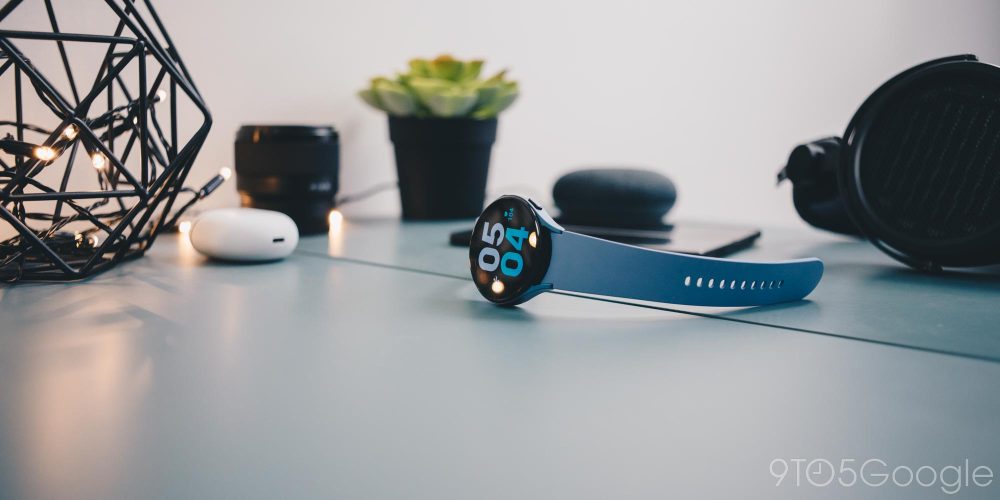
The Galaxy Watch 5 is just another step in a line of very good smartwatches put together by Samsung. At first glance, there isn’t a whole lot that raises the Galaxy Watch 5 to the next level in comparison to its predecessor. Do a little digging, and you’ll find that the Galaxy Watch 5 uses sapphire glass instead of Gorilla Glass. So what’s the difference? This guide will dig into that a little further.
On paper, the Galaxy Watch 5 is an exceedingly fine smartwatch that packs some of the best sensors and features available. The Galaxy Watch 5 has an Exynos W920 – the same as the Galaxy Watch 4 – and Samsung’s BioActive Sensor chip for greater activity monitoring. As for battery life, the Galaxy Watch 5 sees a major upgrade over the previous version with an extra 10 hours or so of juice. The Watch 5 Pro, on the other hand, is set to be capable of 80 hours – a massive leap forward in battery life.
What is sapphire glass?
Besides those changes and similarities, there is one major new improvement to the Watch 5 line, and it comes to the regular Watch 5 as well as the Pro. These new wearables contain sapphire crystal displays, often referred to as “sapphire glass.” Sapphire isn’t a glass as much as it is a crystal engineered to be incredibly strong and colorless, making it absolutely perfect for wearable displays.
The crystal is formed when aluminum oxide and sapphire crystal material chemically react in a lab. From there, it’s managed throughout a long cooling process to facilitate the right structure. Once a block is formed, it can then be shaped and separated into thin sheets for screens.
A sapphire sheet is extremely hard. On the Mohs hardness scale, sapphire ranks at 9. For reference, diamond ranks at 10 and is known to be extremely hard. In theory, it would take something equally hard, if not harder, to scratch the surface of a sapphire crystal display.
Of course, perfection comes at a price. To engineer, produce, and implement sapphire displays into the Galaxy Watch 5 costs more money. Of all the displays out there, including Gorilla Glass, sapphire is the pricier option. Even with that being the case, we don’t see a huge price jump from the Watch 4’s to the Watch 5’s $279 starting price tag.
Apple uses sapphire screens in its titanium and stainless steel Apple Watches, while most of the smartwatch market still uses Gorilla Glass. Of course, an Apple Watch with sapphire will run you upward of $500 or more. For the price tag that the Galaxy Watch 5 series comes with, it’s impressive that sapphire is even involved.
Benefits of sapphire crystal on the Galaxy Watch 5
Sapphire crystal, as mentioned, is extremely durable and resistant to scratches. Whatever Corning Gorilla Glass Victus could do on the Galaxy Watch 4, sapphire certainly gives it a run for its money. Though we’re not willing to test this out just yet, the Galaxy Watch 5’s face is much harder to damage due to the crystal’s structure, making it harder to dig into.

Wearables, in general, are susceptible to a lot of abuse. Just walking around in crowded areas, on narrow walkways, and on the side of brick buildings might give you a little anxiety because you know it only takes a slight movement to rub your watch’s display against those abrasive surfaces. With sapphire glass, there is a much greater chance you can avoid a lot of accidental scratches, leaving you with a clean display.
The argument offered much of the time is that Gorilla Glass survives falls more often, which is understandable as a harder material can’t flex as much and will shatter easier. Though that could be possible, it doesn’t apply as much to the Galaxy Watch 5 series, which likely will never just drop off of your wrist. If you hit something with it, you’re hitting the whole display more likely and letting sapphire in its entirety absorb the shock. In the application of smartwatches, sapphire glass is a great fit.
As an upgrade to the previous Galaxy Watch 4, sapphire is a game changer for the Galaxy Watch 5. Better scratch resistance gives a little more peace of mind when wearing something as an extension of yourself. It remains to be seen how well sapphire holds up on the Galaxy Watch 5, though we expect it will do pretty well as a replacement for Gorilla Glass.
More on Galaxy Watch 5:
- Samsung.com is yet again struggling to handle Galaxy Z Fold 4 and Flip 4 pre-orders
- Galaxy Watch 5 and 5 Pro hands-on: Refining the best Wear OS watches [Video]
- Galaxy Watch 5 & 5 Pro: Premium build w/ sapphire glass and Wear OS 3.5, starting at $279
Add 9to5Google to your Google News feed.
google-news
Author: Andrew Romero
Source: 9TO5Google



